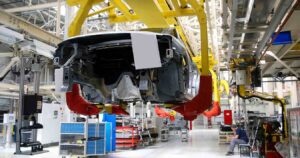Table of Contents
ToggleElectric Vehicle Charging Infrastructure
Electric vehicles (EVs) are becoming increasingly popular as a more environmentally friendly alternative to traditional gasoline-powered vehicles.
As the number of EVs on the road increases, so too does the need for charging infrastructure. EV owners need a reliable and convenient way to charge their vehicles, whether at home, work, or on the road.
In this article, we will explore the current state of electric vehicle charging infrastructure and the challenges and opportunities that lie ahead.

The current state of EV charging infrastructure varies widely depending on the region. In some areas, such as California and Europe, there is a well-developed network of charging stations that can be found in a variety of locations, including parking lots, shopping centers, and along highways.
In other regions, such as some parts of the United States and developing countries, the charging infrastructure is still in its early stages of development.
One of the challenges facing the expansion of EV charging infrastructure is the high cost of installation. Installing charging stations requires significant investment in hardware and electrical infrastructure, which can be a barrier for many businesses and municipalities.
Additionally, there are concerns about the availability of electricity in some regions, particularly during peak demand periods.
Another challenge is the need for interoperability among different charging networks. Currently, there are multiple charging networks with different payment systems and charging protocols, which can be confusing for EV owners and a barrier to widespread adoption.
Despite these challenges, there are opportunities for the expansion of EV charging infrastructure. The growth of EVs presents a new market opportunity for businesses and governments to invest in charging infrastructure. T
here is also an opportunity to develop innovative charging solutions, such as wireless charging and vehicle-to-grid technology.
Conclusion
In conclusion, the expansion of electric vehicle charging infrastructure is critical to the widespread adoption of electric vehicles. While there are challenges to overcome, there are also opportunities for businesses and governments to invest in this growing market.
By working together to develop innovative solutions and create a more interoperable charging network, we can create a more sustainable future for transportation.























